Canoes vs Kayaks: Pros and Cons
Would you go tubing on the water without understanding how it works? Or try and play a game of tennis without understanding the rule? Similar to those activities, you cannot just pick up a paddle and begin moving away from land until you know about the small craft you are using. In this article, we will break down everything you need to know about canoes and kayaks so the next time you are thinking about renting or buying one you know what you need. You will learn what each one is, its pros, cons, and which one may be the right fit for you.
Here are the Pros and Cons of both a Canoe and Kayak.
Canoe
Pros: Plenty of space, comfortable for longer outings, and easy to get in and out of.
Cons: Difficult to transport, require more physical effort, and it will take you time to acquire basic skills.
Kayak
Pros: Easy to learn the basics, light and easy to transport, and easy to maneuver on the water.
Cons: Will get soaked during an outing, moving water can be hard to navigate, and advanced skills take time to learn.
What is a canoe?
We simply cannot begin to paddle our way through the pros and cons of a canoe until we know what it is. A canoe is a keelless (lacking a ridge or fin) boat that is narrow with pointed ends. They are moved with a paddle or paddles depending on the number of people.
Canoes on average can be anywhere from 14 to 17.5 feet long depending on the type. There are shorter and longer canoes available. Most canoes fit up to two people, with some options being designed for one person or three people as well.
What is a kayak?
You cannot begin to row row row this boat until you learn exactly what a kayak is and how it differs from a canoe. Kayaks tend to be individual boats
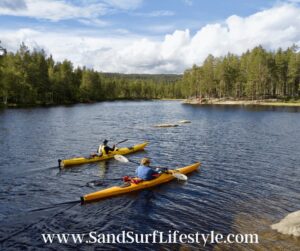
that stay low to the water. In this situation, double-bladed paddles are used to paddle the craft. The person will sit facing the front of the kayak with their legs out in front of them, as the paddle is moved on opposite sides of the boat to move it.
The size of a kayak depends on the individual paddling. They can range anywhere from 6 to 16 feet in length. Kayaks that are closer to being 16 feet long, tend to move quicker in the water due to it having less drag.
Canoeing Pros
Just like any other activity, hobby, or sport there are pros and cons to canoes. First, we are going to cover the pros because it can be nice to learn what is positive about something before reading about the negatives associated with it.
The first pro is that canoes tend to be very spacious. This allows an individual to have plenty of space for not only themselves but also any gear or essentials they may want to take with them. It also allows you to be comfortable when there are two people inside. Some even take children or pets out on the water.
The extra space can also make longer trips more comfortable, as you are able to stretch out and change positions throughout. Your feet or legs will not
fall asleep in a canoe, which will help you to avoid any feelings of discomfort. You will also avoid getting soaked in a canoe due to its narrow shape and size of them. This allows you to enjoy your outing without getting wet and dealing with clothes sticking to you for the next few hours.
Another pro is that canoes are very stable due to their size. This makes them less likely to tip over if you rock the boat too much or get thrown off balance. It also enables them to be easy to get in and out of, which is ideal if you are paddling out alone and do not have someone else to help you out.
Canoeing Cons
Canoes are not an easy thing to transport and move. Due to them being up to 17.5 feet long and weighing between 20 to 100 pounds on average, they
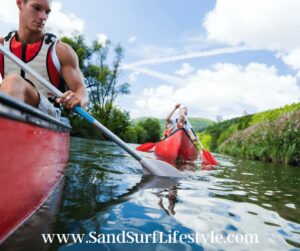
require some muscle to move. You will need to get it loaded on top of your vehicle and strapped down in order to be transported. The process as a whole can be quite daunting and take a physical toll on your body.
Physical effort is needed to not only get the canoe to the water but it is needed while on the water as well. They require a lot of effort to be able to paddle while sitting down especially with how long and hefty the canoe is. The water helps to carry it to some degree, especially when you are in moving water, but ample force is still required to move it.
Basic skills can take a while to learn and be difficult to master. This means that it is not a hobby that anyone can just begin, especially if you are interested in doing longer trips. However, once you master the basic skills it is easier for you to learn the more advanced ones.
Looking to buy a kayak? Here is how to pick the correct one based off of your weight.
Kayaking Pros
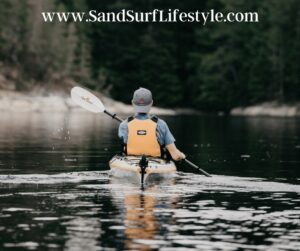 Kayaks tend to be somewhat light and quite easy to move around and transport when compared to other crafts. Since the average kayak is between 6 and 16 feet long the average weight range is between 20 to 80 pounds depending on the material. Most recreational kayaks do tend to lean more towards the lower end of the length scale weighing 60 pounds or less though.
Kayaks tend to be somewhat light and quite easy to move around and transport when compared to other crafts. Since the average kayak is between 6 and 16 feet long the average weight range is between 20 to 80 pounds depending on the material. Most recreational kayaks do tend to lean more towards the lower end of the length scale weighing 60 pounds or less though.
People are able to pick up the basics of kayaking quite easily, which allows them to head out on the water for longer outings sooner rather than later. This is ideal for someone who works at a fast pace and enjoys learning new skills at a quicker pace.
Another pro is that kayaks are easy to maneuver in the water. Since they are built with a stern and bow, which are just slightly curved upwards, which is also called a rocker. So, while kayaks are typically closer to the water the hull, which is the main body of the kayak, remains above the water. This helps it to move quickly and efficiently through the water.
For reasons previously stated, kayaks also tend to move through the water at a fast pace while requiring less effort. Due to the shape and placement of the kayak in the water, it can get picked up easily even in still water. Allowing it to move at a quick and brisk pace taking some of the strain off of the individual.
Kayaking Cons
Since kayaks tend to be so close to the water, you will not walk away from a session dry. Water is likely to splash you and you may have to deal with wet clothing sticking to you throughout your trip. This is a con for most, but if you do not mind getting a bit wet it may not be the worst thing.
While you can learn the basics of kayaking pretty quickly, it can take some time for you to learn the more advanced skills. It is a hobby that takes not only effort but also time if you really want to master it. This can be a drawback for those who tend to be impatient since it can take hours and hours on the water to fully master the art of kayaking.
There is a significant difference between kayaking on flat water compared to moving water. The difference can actually scare some people the first few times they try to make the change, so ensuring that you begin on flat water before moving onto moving water is essential to staying afloat on the new terrain.
Now that you know the differences between what a canoe and kayak are, as well as the pros and cons associated with each one, you can decide which one is best suited for you. Many people will recommend that you test both vessels out before committing to either of them. Now it is time for you to test them out and see which one you prefer.
Related Questions:
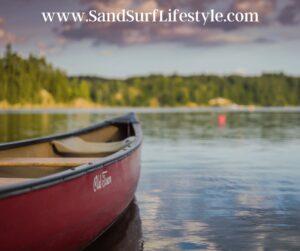 1. Where are you able to go kayaking or canoeing?
1. Where are you able to go kayaking or canoeing?
You can go kayaking or canoeing on any body of water as long as it is large enough for you to comfortably move around in and is open to the public. Lakes, rivers, rapids, seas, and creeks are all possible locations.
2. What should I bring when I head out to the water?
There are definitely a few essentials that you should take out on the water with you. The list includes but is not limited to water, sunscreen, a hat, sunglasses, waterproof bags to hold any personal belongings, and gloves if you have a hard time gripping the paddles.
3. What does someone wear when they go canoeing or kayaking?
What to wear depends on the season. If it is summertime, then a hat with clothes and shoes you would not mind getting wet is ideal. However, if it’s colder out a wet suit may be better as it will help protect you from the cold. A general rule is to wear comfy clothes that will not cause you to chafe.
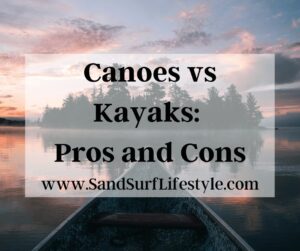
Please note: This blog post is for educational purposes only and does not constitute legal or medical advice. Please consult a legal expert or medical professional to address your specific needs.

